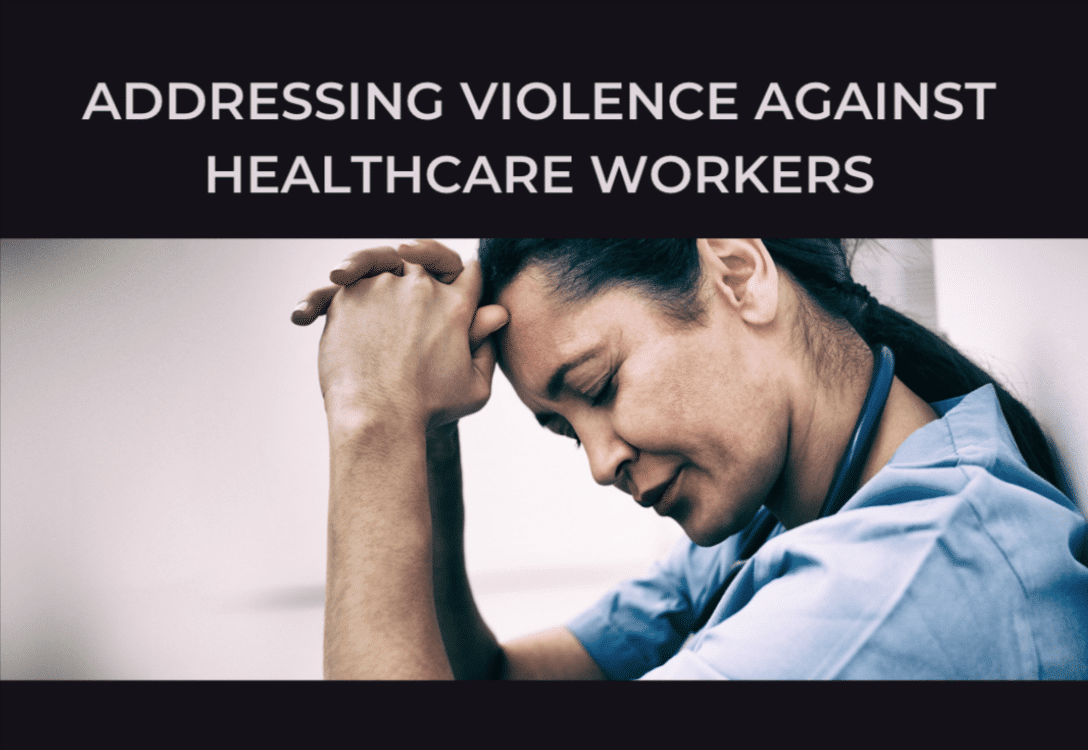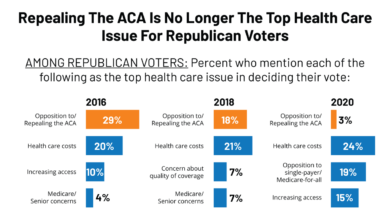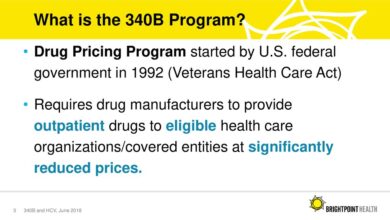
Michigan Law Violence Healthcare Workers A Critical Look
Michigan law violence healthcare workers: This crucial issue highlights the alarming rise in assaults and threats against healthcare professionals within the state. We’ll delve into the stark statistics, examining the types of violence, the locations most affected, and the devastating impact on both individuals and the healthcare system as a whole. Understanding the current legal landscape in Michigan, including penalties for perpetrators, is essential to building a safer working environment for those who dedicate their lives to caring for others.
This post will explore existing Michigan laws designed to protect healthcare workers, compare them to national standards, and discuss the significant psychological and physical toll violence takes on these professionals. We’ll also investigate successful prevention strategies, explore potential improvements to current legislation, and offer recommendations for creating a more secure future for healthcare workers in Michigan.
Prevalence of Violence Against Healthcare Workers in Michigan
The safety and well-being of healthcare workers are paramount, yet violence against them remains a significant concern in Michigan, as it does nationally. Understanding the extent and nature of this violence is crucial for implementing effective prevention and intervention strategies. This section will delve into the prevalence of violence against healthcare workers in Michigan, comparing it to national trends and examining the types of healthcare settings most impacted.
Statistics on Assaults and Threats Against Healthcare Workers in Michigan
Unfortunately, comprehensive, publicly available, and consistently reported statistics specifically detailing assaults and threats against healthcare workers in Michigan are limited. Data collection practices vary across healthcare facilities, and not all incidents are reported to state or national agencies. This lack of centralized, readily accessible data presents a significant challenge in accurately assessing the true scope of the problem.
However, anecdotal evidence from healthcare unions, professional organizations, and news reports consistently highlights a concerning level of violence experienced by Michigan’s healthcare workforce. Many reports describe an increase in verbal abuse, physical assaults, and even threats of violence against medical staff, often linked to factors such as patient frustration, mental health crises, and substance abuse. More research and better data collection methodologies are needed to obtain precise figures.
Comparison of Michigan Rates to National Averages
Due to the aforementioned data limitations regarding Michigan-specific statistics, a direct comparison to national averages is difficult. The Bureau of Labor Statistics (BLS) and other national organizations track workplace violence across various sectors, including healthcare. National data consistently shows that healthcare workers experience significantly higher rates of workplace violence than workers in other professions. While we cannot definitively quantify Michigan’s position relative to the national average without more robust state-level data, the qualitative evidence strongly suggests that Michigan healthcare workers face a substantial risk of violence, aligning with the national trend of elevated violence in the healthcare sector.
Healthcare Settings Most Affected by Violence, Michigan law violence healthcare workers
While precise data for Michigan is unavailable, national trends offer insights into which healthcare settings are most vulnerable. Based on national studies, emergency departments (EDs) in hospitals consistently report the highest rates of violence against healthcare workers. This is often attributed to the high-stress, high-volume nature of ED work, the presence of patients experiencing acute distress, and the potential for encounters with individuals under the influence of drugs or alcohol.
Psychiatric units in hospitals and behavioral health clinics also experience high rates of violence, reflecting the challenges inherent in caring for patients with mental health conditions. Other settings, such as long-term care facilities and outpatient clinics, also report incidents of violence, although perhaps at lower rates compared to EDs and psychiatric units.
Michigan’s new law addressing violence against healthcare workers is a crucial step, but we need more proactive solutions. Understanding patient behavior and predicting potential risks could be aided by advancements like those discussed in this fascinating study widespread digital twins healthcare , which explores using digital twins to improve patient care. Ultimately, better data and predictive modeling might help us create safer environments for everyone in the healthcare system, reducing the risk of violence against our dedicated professionals.
Incident Data Table (Illustrative Example)
The following table presents illustrative data, emphasizing the need for improved data collection and reporting in Michigan. The figures are hypothetical and intended to demonstrate the structure of such a table, not to represent actual Michigan statistics.
| Setting Type | Number of Incidents | Type of Violence | Year |
|---|---|---|---|
| Hospital Emergency Department | 150 | Physical Assault, Verbal Abuse | 2022 |
| Psychiatric Hospital Unit | 80 | Physical Assault, Threats | 2022 |
| Outpatient Clinic | 30 | Verbal Abuse | 2022 |
| Long-Term Care Facility | 45 | Physical Assault, Verbal Abuse | 2022 |
Michigan Laws Addressing Violence Against Healthcare Workers
Protecting healthcare workers from violence is paramount, not only for their safety and well-being but also for the continued provision of essential medical services. Michigan, like many other states, has enacted legislation to address this critical issue, outlining specific protections and penalties for those who perpetrate violence against medical professionals. Understanding these laws is crucial for both healthcare workers and the public.Michigan’s legal framework aims to deter violence and provide recourse for victims.
Several statutes contribute to this protective framework, focusing on both the criminal and civil aspects of assaults and threats against healthcare personnel. These laws vary in their specifics depending on the setting (hospital, clinic, ambulance, etc.) and the nature of the violence. Penalties range from fines and community service to lengthy prison sentences, reflecting the severity of the offense.
Penalties for Assaulting or Threatening Healthcare Workers in Michigan
Assaulting or threatening a healthcare worker in Michigan carries significant legal consequences. The penalties depend on the severity of the assault, the presence of aggravating factors (such as the use of a weapon), and the offender’s prior criminal record. For instance, a simple assault might result in a misdemeanor charge, leading to fines and jail time. However, more serious assaults, particularly those involving weapons or causing significant injury, can result in felony charges with much harsher penalties, including lengthy prison sentences.
Michigan law also considers the context of the assault, recognizing that attacks on healthcare workers often occur in stressful and emotionally charged environments. This context can influence sentencing decisions.
Specific Provisions for Different Healthcare Settings
Michigan’s laws don’t differentiate significantly based on the specific healthcare setting. The core protections afforded to healthcare workers apply broadly across hospitals, clinics, ambulances, nursing homes, and other healthcare facilities. However, the specific circumstances of the assault might be considered during prosecution and sentencing. For example, an assault in an emergency room during a chaotic situation might be viewed differently than a premeditated attack in a doctor’s office.
The new Michigan law addressing violence against healthcare workers is a crucial step, but it’s just one piece of the puzzle. We need systemic change, and sometimes that means looking at larger trends, like the corporate maneuvering happening in the healthcare industry; for instance, I read today that NextGen Healthcare is exploring a sale, as reported by Reuters nextgen exploring sale reuters.
This kind of consolidation could impact how we deliver care and ultimately, the safety of healthcare workers, reinforcing the need for strong protections like those in the Michigan law.
The location of the assault, while not changing the core legal framework, can influence the narrative presented in court and the subsequent judicial decisions.
Comparison of Michigan’s Laws with Other States
While many states have enacted laws to protect healthcare workers, the specifics vary. Some states have broader definitions of “healthcare worker” than others, encompassing a wider range of professions. Similarly, the penalties for assaulting healthcare workers can differ significantly across states, with some imposing stricter punishments than others. Some states have also implemented specific programs or initiatives aimed at reducing violence against healthcare workers, such as enhanced security measures or violence prevention training.
A comprehensive comparison would require a detailed analysis of the statutes in each state, but generally, Michigan’s laws are in line with national trends toward stronger protections for healthcare professionals. However, the effectiveness of these laws relies on consistent enforcement and reporting.
Impact of Violence on Healthcare Workers in Michigan
The rising tide of violence against healthcare workers in Michigan has far-reaching consequences, extending beyond immediate physical injuries. The emotional toll, the impact on staffing levels, and the long-term effects on the well-being of these professionals demand urgent attention and comprehensive solutions. Understanding the full scope of this impact is crucial for developing effective prevention strategies and support systems.
Psychological and Physical Effects of Workplace Violence
Workplace violence inflicts significant psychological and physical harm on healthcare professionals. Physical injuries can range from minor bruises and cuts to severe trauma, including broken bones and even death. Beyond the immediate physical effects, many victims experience post-traumatic stress disorder (PTSD), anxiety, depression, and sleep disturbances. The constant fear of future attacks creates a stressful work environment, impacting job performance and overall well-being.
For example, a nurse repeatedly threatened by a patient may develop anxiety, impacting their ability to provide quality care and potentially leading to burnout. The psychological scars can be profound and long-lasting, requiring specialized therapeutic interventions.
Michigan’s new law addressing violence against healthcare workers is a crucial step, but technology can also play a part. I was reading about how Google Cloud Healthcare, with Amy Waldron at the helm, is leveraging generative AI google cloud healthcare amy waldron generative AI to improve patient care and safety. Perhaps similar AI solutions could help predict and prevent future violent incidents against Michigan’s healthcare professionals, providing an additional layer of protection.
Impact on Healthcare Worker Retention and Recruitment
The prevalence of violence is a significant factor contributing to the shortage of healthcare workers in Michigan. Many professionals, particularly those in high-risk areas such as emergency rooms and psychiatric units, are leaving the profession due to safety concerns. This exodus exacerbates existing staffing shortages, leading to increased workloads for remaining staff, further increasing stress and the risk of burnout.
The negative perception of the healthcare work environment due to violence also deters potential recruits, making it increasingly difficult to fill vacancies and maintain adequate staffing levels. Hospitals struggling to attract and retain staff may find themselves unable to provide timely and efficient care.
Support Systems and Resources for Victims
Fortunately, several support systems and resources are available to victims of workplace violence in Michigan. Many hospitals offer employee assistance programs (EAPs) that provide counseling, crisis intervention, and other support services. Professional organizations, such as the Michigan Nurses Association, also offer resources and advocacy for their members. Additionally, legal avenues exist to hold perpetrators accountable and ensure that healthcare workers are protected under the law.
These resources are crucial for helping victims cope with the trauma, recover from their injuries, and return to work safely. Early intervention and access to these support services are critical for mitigating the long-term effects of workplace violence.
Long-Term Consequences of Workplace Violence on Healthcare Workers’ Well-being
The long-term consequences of workplace violence can significantly impact the lives of healthcare workers. A lack of adequate support can lead to:
- Chronic health problems: Increased risk of cardiovascular disease, gastrointestinal issues, and other stress-related illnesses.
- Substance abuse: Turning to alcohol or drugs as a coping mechanism for trauma and stress.
- Relationship difficulties: Strained relationships with family and friends due to the emotional toll of workplace violence.
- Career changes: Leaving the healthcare profession altogether due to safety concerns and emotional distress.
- Financial instability: Loss of income due to time off work for recovery or inability to work due to ongoing health issues.
Prevention Strategies and Initiatives

Source: medpagetoday.net
Preventing violence against healthcare workers in Michigan requires a multifaceted approach encompassing robust security measures, comprehensive training programs, and a supportive workplace culture. Success hinges on collaboration between healthcare facilities, regulatory bodies, and law enforcement. Effective strategies must address both the physical and psychological safety of healthcare professionals.
Successful Violence Prevention Programs in Michigan Healthcare Settings
Several Michigan healthcare systems have implemented successful violence prevention programs. For example, some hospitals have adopted the “Hospital Assault Reduction Program” (HARP), a nationally recognized model focusing on environmental design, staff training, and improved security protocols. Key components often include improved lighting in parking lots and hallways, installation of panic buttons, and the implementation of comprehensive de-escalation training for staff.
Other facilities have partnered with local law enforcement to establish rapid response teams, ensuring swift intervention in violent incidents. These programs often track incidents meticulously, allowing for data-driven adjustments to improve effectiveness over time. The success of these programs is often measured by a reduction in reported assaults and improved staff morale.
Hypothetical Violence Prevention Program for a Rural Michigan Emergency Department
A hypothetical violence prevention program for a rural Michigan emergency department would prioritize accessibility and practicality. Given the often limited resources in rural settings, the program would focus on cost-effective yet impactful strategies. The program would begin with enhanced security measures, such as installing security cameras with high-resolution capabilities covering all access points and critical areas within the department.
These cameras would be connected to a central monitoring system accessible to security personnel and local law enforcement. The program would also include mandatory de-escalation training for all staff, emphasizing verbal communication techniques and non-violent crisis intervention strategies. This training would be reinforced with regular refresher courses and simulated scenarios. Additionally, the program would promote a culture of safety by establishing a clear reporting mechanism for all incidents, both violent and near-miss events, ensuring prompt investigation and appropriate action.
Finally, the program would emphasize the importance of psychological support for staff who experience violence, providing access to employee assistance programs and counseling services.
The Role of Workplace Culture and Training in Preventing Violence
A positive and supportive workplace culture plays a vital role in preventing violence. Open communication, where staff feel comfortable reporting concerns without fear of retribution, is crucial. Comprehensive training programs focusing on de-escalation techniques, self-defense strategies, and conflict resolution skills equip healthcare workers with the tools to manage potentially violent situations effectively. Regular training, including scenario-based exercises, helps staff build confidence and preparedness.
Furthermore, a zero-tolerance policy for violence, clearly communicated to both staff and patients, sends a strong message that violence will not be tolerated. This policy must be consistently enforced to maintain credibility and effectiveness.
Improved Security Measures for a Safer Work Environment
Implementing robust security measures is essential for creating a safer work environment. This includes installing security cameras with clear visibility, employing security personnel during high-risk periods, and improving lighting in both interior and exterior areas of the facility. Access control systems, such as key card entry or security checkpoints, can restrict access to sensitive areas. Panic buttons strategically placed throughout the facility provide immediate access to emergency services.
Regular security assessments and audits, conducted by security experts, can identify vulnerabilities and recommend improvements to security protocols. These measures, coupled with staff training and a supportive workplace culture, contribute significantly to a safer and more secure environment for healthcare workers.
Future Directions and Policy Recommendations: Michigan Law Violence Healthcare Workers
Protecting Michigan’s healthcare workers requires a multifaceted approach that goes beyond existing legislation. While current laws offer some protection, significant gaps remain in addressing the pervasive issue of workplace violence. Strengthening these laws, coupled with increased funding for prevention and support programs, is crucial for creating safer and more supportive work environments for those who dedicate their lives to caring for others.The current legal framework in Michigan, while a starting point, needs bolstering to effectively deter violence and support victims.
Improved data collection on workplace violence incidents is vital for understanding the true scope of the problem and targeting interventions effectively. Furthermore, proactive measures such as enhanced security protocols and improved training programs are essential to prevent incidents before they occur. The financial burden on healthcare facilities and individual workers following a violent incident also necessitates attention, necessitating comprehensive support systems.
Strengthening Legal Protections and Enforcement
Michigan’s current laws need to be strengthened to better define and prosecute assaults against healthcare workers. This includes clarifying the definition of “healthcare worker” to encompass a broader range of professions, such as medical assistants and home health aides, who are also vulnerable to violence. Furthermore, penalties for assaulting healthcare workers should be increased to act as a stronger deterrent.
Effective enforcement of existing laws is also critical; increased funding for law enforcement training on handling these specific types of cases is necessary. Finally, the legal process should be streamlined to ensure swift and just outcomes for victims.
Increasing Funding for Violence Prevention Programs
Adequate funding is essential for implementing and sustaining effective violence prevention programs. This funding should support comprehensive training programs for healthcare workers on de-escalation techniques, conflict resolution, and self-protection strategies. Furthermore, it should enable the implementation of enhanced security measures, such as improved lighting, security cameras, and panic buttons, in healthcare facilities. Financial resources are also crucial for developing and implementing robust reporting systems to track incidents, analyze trends, and inform targeted prevention strategies.
Finally, funding should support mental health services and support for healthcare workers who have experienced violence.
Policy Recommendations for Improving Healthcare Worker Safety
The following policy recommendations aim to create a safer environment for healthcare workers in Michigan:
- Expand the definition of “healthcare worker” in existing legislation to include all individuals providing direct patient care.
- Increase penalties for assaulting healthcare workers, including mandatory minimum sentences for serious offenses.
- Mandate comprehensive violence prevention training for all healthcare workers, including de-escalation techniques and self-protection strategies.
- Require healthcare facilities to implement enhanced security measures, such as improved lighting, security cameras, and readily accessible panic buttons.
- Establish a statewide reporting system for workplace violence incidents to track trends and inform prevention efforts.
- Increase funding for mental health services and support for healthcare workers who have experienced violence.
- Develop and implement a public awareness campaign to educate the public about the importance of respecting healthcare workers and the consequences of violence.
- Provide financial assistance to healthcare facilities to help them implement violence prevention measures.
- Create a task force to regularly review and update Michigan’s laws and policies related to workplace violence against healthcare workers.
Last Recap

Source: healingbreaths.org
The safety and well-being of Michigan’s healthcare workers are paramount. Addressing the pervasive issue of workplace violence requires a multifaceted approach, encompassing stronger legislation, improved prevention programs, and a cultural shift that prioritizes the safety and security of those who provide essential care. By understanding the scope of the problem, the existing legal framework, and the potential for positive change, we can work collaboratively towards creating a healthier and safer environment for all healthcare professionals in Michigan.
Question & Answer Hub
What types of violence are most common against healthcare workers in Michigan?
Verbal abuse, threats, physical assault, and even instances of sexual harassment are unfortunately common.
Are there resources available to healthcare workers who experience violence?
Yes, many hospitals and healthcare systems offer counseling, support groups, and employee assistance programs. Additionally, external organizations dedicated to supporting victims of workplace violence can provide valuable resources.
What can I do if I witness violence against a healthcare worker?
Report the incident immediately to your supervisor or security personnel. Document the event as accurately as possible, including date, time, location, and details of the incident.
How can I contribute to creating a safer work environment for healthcare workers?
By actively participating in workplace safety training, reporting any incidents, and supporting initiatives aimed at improving security and promoting a respectful work culture.





